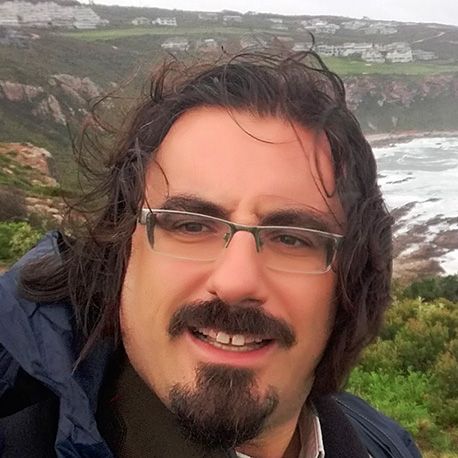
Georgios Polymeris
-
PhD (Aristotle University of Thessaloniki)
-
Scientist at NCSR "Demokritos"
-
Cultural Heritage (CHTE)
-
Physics (PHYS)
Courses
Dr. Georgios S. Polymeris graduated the Physics Department of the Aristotle University of Thessaloniki (BSc, 1998) and received his PhD degree in the field of luminescence dosimetric applications in Cultural Heritage in 2006 from the same Department/University, in collaboration with the Cultural and Educational Technology Institute in Xanthi/Greece. Following his PhD, he has completed three post docs in Cultural and Educational Technology Institute, Xanthi-Greece, Isik University, Istanbul-Turkey and Aristotle University, Thessaloniki-Greece. He has also worked as an assistant professor at the Institute of Nuclear Sciences in Ankara University, Turkey. Presently, he has joined the Archaeometry Laboratory of the Institute of Nanoscience and Nanotechnology at National Center for Scientific Research “Demokritos” (INN/NCSR “Demokritos”) since 2020. He has been involved for years in the application of ionizing radiation for Cultural Heritage Purposes with special emphasis in age calculation. Moreover, he has been active within the topic of materials’ characterization. He was involved in EU projects as research scientist, dealing with both aforementioned topics, namely both age assessment and materials science. Dr Polymeris has long experience in age assessment of archaeological artifacts and geomorphological formations. He has published more than 170 papers in international peer-reviewed journals (>2100 citations, h-index: 24) and three book chapters. He has co-supervised more than 15 undergraduate students, 10 master students and 7 PhD students in archaeological science and materials science. He was member of technical program committees and both scientific and organizing committees for various conferences. He is reviewer in several international journals of AIP, ACS, Springer and Elsevier Editorial Houses as well as for scientific proposals in several countries. His research interests include (a) the techniques of Stimulated Luminescence, Radiocarbon, Electron Paramagnetic Resonance (EPR) and Fourier Transform Infrared (FTIR) spectroscopy and the corresponding applications, (b) basic research in luminescence phenomena, (c) age limit extension in stimulated luminescence and (d) the application of computational methods as well as new technologies in age assessment. Major contribution includes the pioneer studies of thermally assisted OSL (TA – OSL) in a plethora of either natural or artificial materials, towards accessing stable very deep electron traps (VDTs) and thus extending the luminescence age limits beyond ages of one million years. The recent respective results were included in a chapter of a book published by World Scientific. He has collaborated with other archaeological scientists in Europe (Spain, Poland, Italy, Greece) and outside Europe in India, the USA, Brazil and Turkey.


